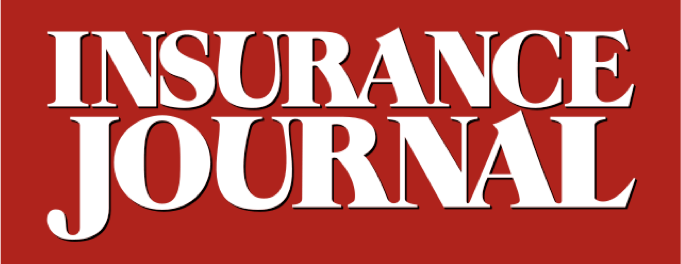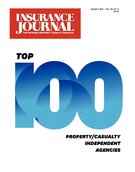The architects and engineers (A&E) sector is changing rapidly as design professionals adopt new project delivery methods and technology tools to increase efficiency and reduce costs.
As the sector evolves, A&E firms and their insurance agents are facing new exposures that they should mitigate with effective risk management and professional liability insurance. Here are five evolving trends shaping the segment.
1. Design-Build Project Delivery Methods
As the A&E sector navigates post-pandemic challenges around supply chains, soaring material costs, and labor shortages, design-build remains a preferred project delivery method. Design-build enables collaboration between project owners, contractors, and the design team, and it provides more flexibility than some other project delivery methods–but it does come with certain risks.
Often, design-build contractors are required to provide a fixed price to project owners when the design work is only 15%-20% complete. At such an early stage in a project, it is challenging for contractors to shape a budget with total accuracy. This can lead to claims down the road connected to projects being over budget and behind schedule.
One positive trend in the industry is a move toward progressive design-build, where project pricing is determined as the design is much closer to completion. This does result in higher costs up-front–which project owners may reject–but it can reduce the risk of costly insurance claims later in the project.
2. Artificial Intelligence
One piece of technology that is now pervasive in the A&E sector is BIM, or Building Information Modeling. BIM is a detailed 3D model that holds critical information about a project from its structure to its systems and its future maintenance requirements. This helps project owners and contractors to better forecast the capital requirements of their project through completion and beyond.
Similar to where BIM was 20 years ago, A&E professionals are now starting to explore potential use cases for artificial intelligence (AI) in the sector. Like BIM, AI tools have the potential to boost project efficiency and reduce costs, but in their early formative stage, these tools also come with significant risks.
The American Council of Engineering Companies (ACEC) has issued suggested guidelines on the use of AI by design professional firms; however, ACEC is careful to state that:
“Neither these Guidelines nor anything set forth herein constitute requirements, mandates, or an establishment of any facet of a design professional’s standard of care. This information is not a statement by ACEC, its Risk Management Committee, this Subcommittee, the Technology Committee, or anyone affiliated with ACEC or any Member Firm regarding any legal, professional, or other standard or requirement in connection with a design professional’s use or consideration of AI.”
A&E firms should consult with their legal counsel to establish their own guidelines and standards for how and when AI might be used in their business processes and to maintain human oversight and interaction with the technology to ensure they continue to meet their professional standard of care responsibilities.
3. Climate Change and Sustainability
As Americans grow more aware of climate change, extreme weather, and sustainability issues, local laws and building codes are evolving, as is the A&E professional standard of care.
A&E professionals can anticipate future legislative changes by incorporating additional safety tolerances and sustainability initiatives into their designs. If project owners are unwilling to pay for those risk mitigation efforts up-front, design firms need to document their recommendations as these climate and sustainability issues may come into focus for claims and litigation in the future.
4. Senior Personnel
Another issue of concern for the A&E sector is the aging workforce. Like their peers in other industries, A&E firms are facing a talent attraction and retention issue–one that could result in a major loss of technical expertise when older generations retire. Management at A&E firms should look at creative ways to encourage retention, such as enabling a hybrid working model and providing better education and mentorship opportunities.
There seems to be a generational divide among some design professionals who in past years would be candidates for ownership of their firms. There appear to be fewer professionals interested in taking ownership roles. As a result, mergers and acquisitions are a frequent occurrence, and agents would be wise to consult with their professional liability insurance providers to understand the unique coverage needs of firms involved in these transactions.
5. Managing New Exposures
The evolving trends in the A&E sector are exciting from a project cost reduction, efficiency, and sustainability standpoint, but they also come hand-in-hand with new exposures for risk managers to tackle and insurance carriers to underwrite.
These new exposures are adding pressure to a market already under strain. In recent years, A&E professional liability insurers have increased their rates and restricted their limit capacity in response to higher claim frequency and severity.
Many claims in the A&E sector continue to revolve around project delays and budget deficiencies, which were exacerbated by inflation and supply chain disruption during the pandemic. Currently, one of the primary pain points in the sector is social inflation.
Social inflation is a term used to describe the rising severity of claim costs due to more litigation, broader definitions of liability, more plaintiff-friendly legal decisions, and larger compensatory jury awards or settlements. Social inflation has become a particular problem in certain parts of the industry, such as civil and highway engineering projects, where bodily injury and wrongful death claims have resulted in excessive jury verdicts against A&E insureds.
With such challenges, insurance agents could suggest that A&E firms consider increasing policy limits. However, that strategy may prove challenging, especially with larger projects seeking limits of $5 million or more, and insurance providers reducing their limit capacity. One way around this is to structure layered insurance programs with multiple insurers.
Risk Management
By and large, the greatest service agents can provide their architect and engineer clients is to drum home the importance of comprehensive risk management, including:
- Strong contractual practices
- Careful project selection
- Proper quality control and assurance
- Risk awareness
- Meticulous documentation
Some key contractual risk management mechanisms include having a clear scope of work and definition of the professional standard of care. A&E firms should also avoid guarantees and warranties (whether formally expressed or implied) and incorporate limitation of liability where legally possible. Working with a local attorney who is familiar with the legal environment in an insured’s locality can also help with contract negotiations.
Topics Trends
Was this article valuable?
Here are more articles you may enjoy.



 Court Ruling Could Help Shed Light on Owners of Litigation Funders, Medical Clinics
Court Ruling Could Help Shed Light on Owners of Litigation Funders, Medical Clinics  Viewpoint: Artificial Intelligence Is Rewriting the Rules for Commercial Lines
Viewpoint: Artificial Intelligence Is Rewriting the Rules for Commercial Lines  Cessna Jet Tied to Nascar Driver Greg Biffle Crashes in North Carolina
Cessna Jet Tied to Nascar Driver Greg Biffle Crashes in North Carolina  AIG Partners With Amwins, Blackstone to Launch Lloyd’s Syndicate Using Palantir
AIG Partners With Amwins, Blackstone to Launch Lloyd’s Syndicate Using Palantir 



